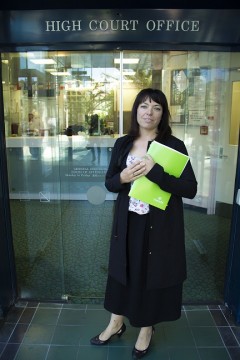Is it protected, or not?
Forest & Bird has decided to take a stand on DOC’s decision to downgrade the status of part of Ruahine Forest so that it can be given to the company behind the Ruataniwha dam.

Forest & Bird lawyer Sally Gepp with the judicial review application.
Our legal team has asked the High Court to decide if DOC’s decision is legal – we think it’s not.
The key issue is whether an area legally protected by the Conservation Act and deemed a Forest Park can be demoted to stewardship land (land that has not been formally classified as having significant biodiversity or recreational value), to allow it to be removed from the Park.
By doing so, DOC has set a precedent for all forest parks, conservation parks, and ecological and wilderness areas in New Zealand.
Nearly one million hectares throughout New Zealand are classified as ‘specially protected’ areas, providing essential habitat for our native wildlife. Until early this month, we all thought that specially protected meant just that. Protected. According to DOC, it doesn’t.
The question of whether the Ruataniwha dam should go ahead has, up until now, largely been a regional conversation on sustainable farming practice and water quality.
But almost overnight, this issue has become a nationally significant question about New Zealand’s specially protected conservation estate. Is it protected, or not?
We’re asking the High Court to decide.
